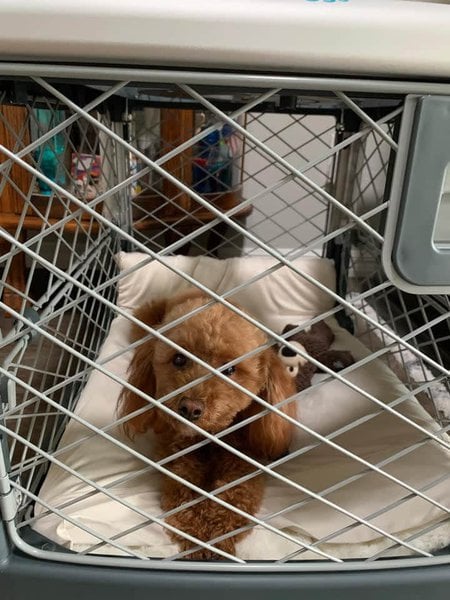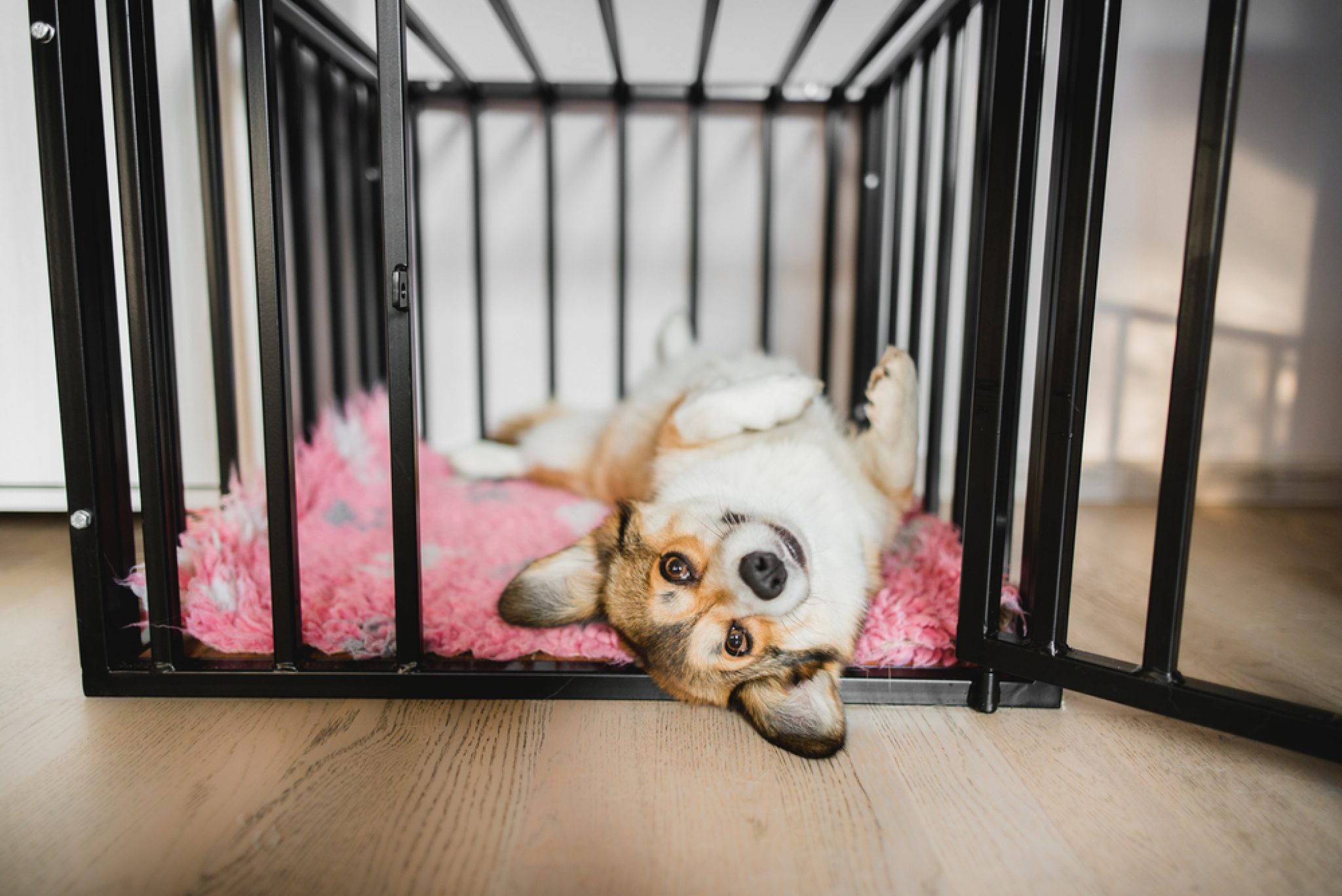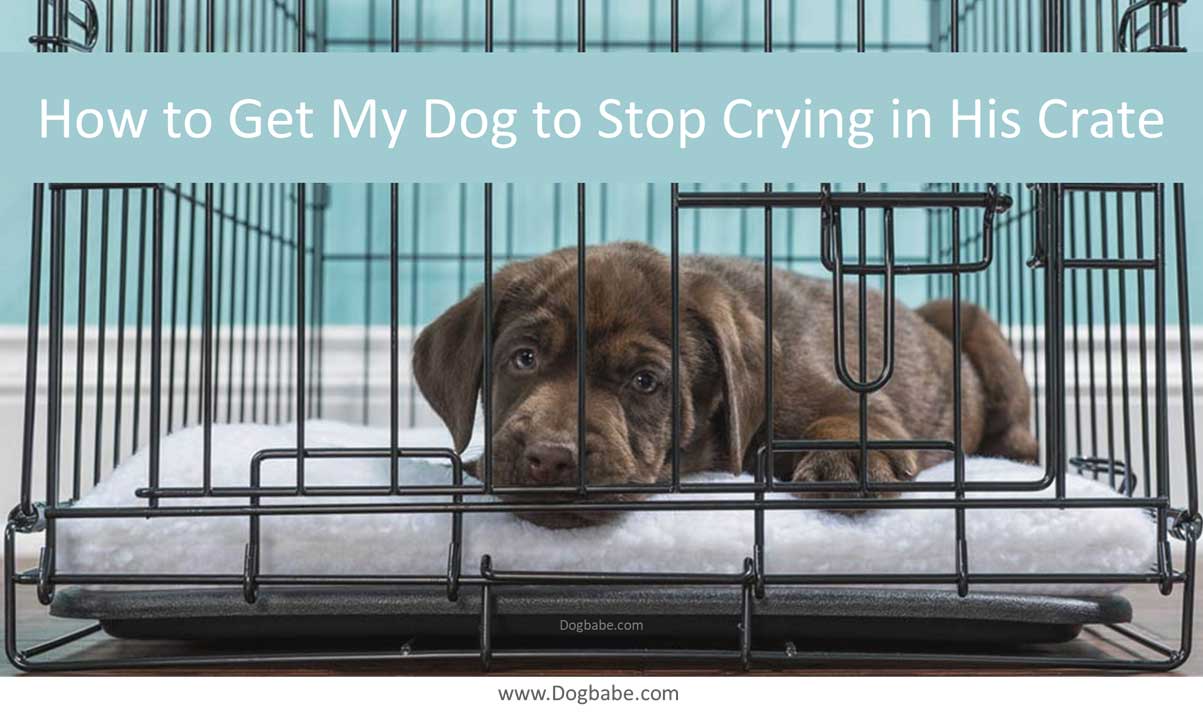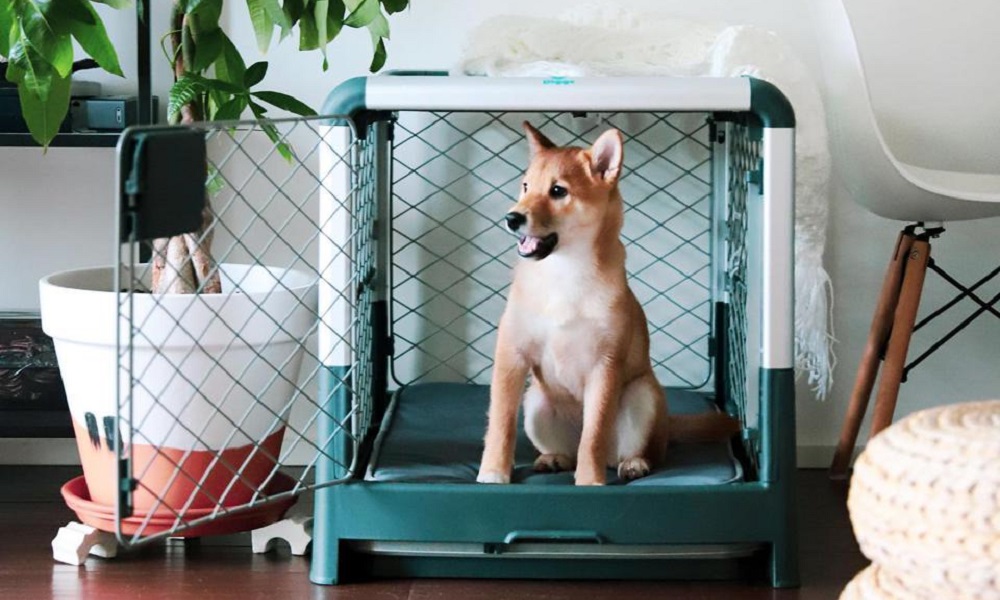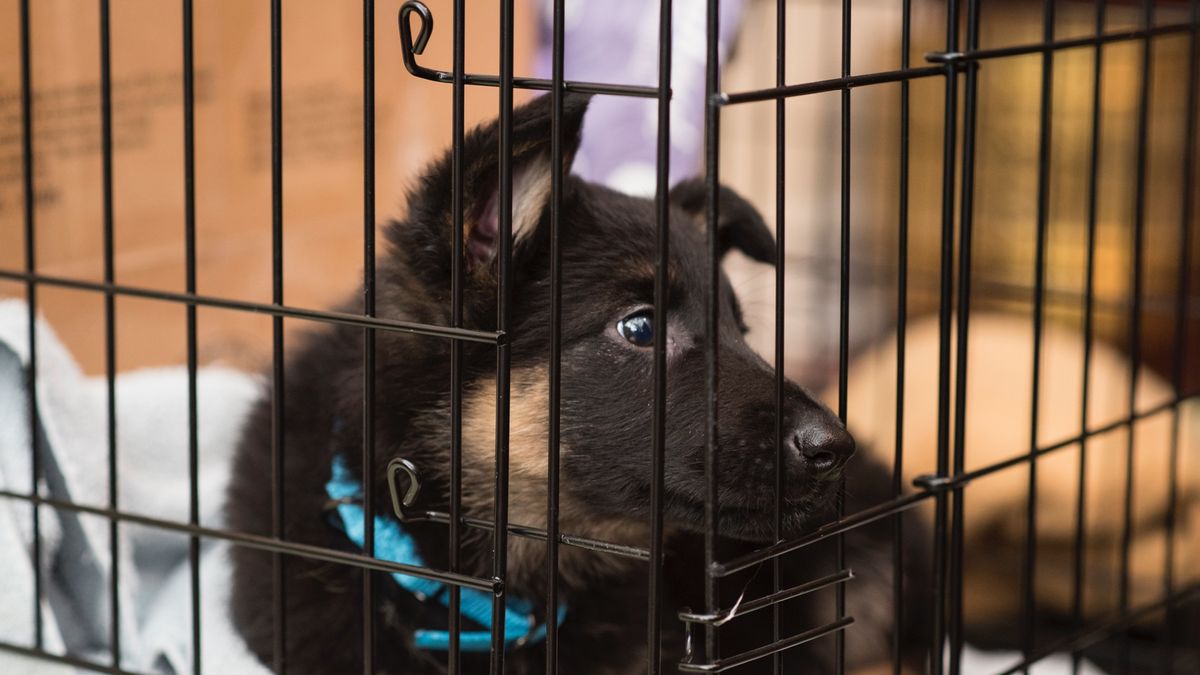How Do You Stop A Dog From Whining In Crate

Imagine this: you've finally settled into your favorite armchair, a warm cup of tea in hand, ready to unwind after a long day. Suddenly, a high-pitched whine pierces the tranquility, emanating from the corner where your beloved dog, Barnaby, is "relaxing" in his crate. His soulful eyes plead for release, turning your peaceful evening into a symphony of canine complaint. You love Barnaby, but the constant whining is testing your patience, and you're starting to wonder if crate training was a mistake.
The truth is, excessive whining in a crate is a common challenge for dog owners. While a crate can be a safe and comforting den for your furry friend, transforming it into a happy place often requires patience, understanding, and a strategic approach. This article will explore proven methods to address crate whining, turning your dog's crate into a haven rather than a source of stress for both of you.
Understanding the Whine: Why is Barnaby Complaining?
Before diving into solutions, it's crucial to understand the reasons behind Barnaby's vocal protests. Is he truly anxious, or is he simply trying to manipulate you into letting him out? The answer will dictate your approach.
Some common reasons for crate whining include:
- Anxiety or Fear: New environments, loud noises, or separation anxiety can trigger fear, leading to whining.
- Boredom: A lack of mental stimulation can make the crate feel like a prison, prompting whines of protest.
- Need to Potty: Sometimes, the whine is a legitimate signal that your dog needs to relieve himself.
- Attention Seeking: Clever dogs quickly learn that whining often results in attention, even if it's negative.
- Medical Issues: In rare cases, whining can be a sign of underlying medical discomfort, necessitating a vet visit.
The Importance of Positive Association
The foundation of successful crate training is building a positive association with the crate. Think of it as creating a cozy retreat, not a punishment zone. This involves making the crate a desirable place for your dog to be.
Start by making the crate comfortable. Add soft bedding, a favorite toy, and maybe even a well-worn t-shirt that smells like you.
Next, introduce the crate gradually. Don't force your dog inside; instead, lure him in with treats or a favorite toy. Praise him enthusiastically when he enters, even for a brief moment.
Turning the Crate into a Treat Dispenser
One effective technique is to feed your dog his meals inside the crate. This helps him associate the crate with positive experiences and reduces anxiety related to being confined.
Initially, you might leave the crate door open, allowing him to enter and exit freely while he eats. Gradually, you can start closing the door for short periods, increasing the duration as he becomes more comfortable. The goal is to make mealtime synonymous with crate time, eliminating his reluctance.
Strategies for Addressing Whining
Once you've established a positive association, you can start addressing the whining directly. Consistency is key here; giving in to the whining will only reinforce the behavior.
The Ignore-the-Whine Protocol
This is perhaps the most challenging, but often the most effective, method. When your dog starts whining in the crate, ignore him completely. No eye contact, no talking, no acknowledging the behavior in any way. This teaches him that whining doesn't get him what he wants.
Wait for a moment of silence, even a brief pause, and then reward him with praise and a treat. The timing is crucial; you want to reward the silence, not the whining.
This method requires immense patience. The whining may escalate initially as your dog tests the boundaries. However, if you remain consistent, he will eventually learn that silence is the key to getting your attention.
Short, Supervised Crate Time
Begin with short crate sessions, even just a few minutes at a time, while you're present. This allows you to monitor your dog's behavior and intervene if he becomes excessively anxious.
Provide him with a stimulating chew toy or puzzle toy to keep him occupied. As he becomes more comfortable, gradually increase the duration of the crate time.
Desensitization and Counter-Conditioning
Desensitization involves gradually exposing your dog to the crate in a controlled manner, reducing his anxiety over time. Counter-conditioning pairs the crate with positive experiences, such as treats, toys, or praise.
For example, you might start by simply placing the crate in a room where your dog spends a lot of time. Then, gradually encourage him to enter the crate, rewarding him each step of the way. This process can take time, but it's a gentle and effective way to reduce crate-related anxiety.
Ruling Out Other Needs
Before assuming the whining is purely behavioral, make sure your dog's basic needs are met. Is he hungry? Does he need to go to the bathroom? Is he getting enough exercise?
A tired dog is often a quieter dog. Ensuring he's had adequate physical and mental stimulation before crating can significantly reduce whining.
Seeking Professional Guidance
If you've tried these strategies and the whining persists, consider seeking guidance from a certified professional dog trainer or veterinary behaviorist. They can assess your dog's individual needs and develop a customized training plan.
According to the American Veterinary Medical Association (AVMA), consulting a professional is recommended if the whining is accompanied by other signs of distress, such as panting, drooling, or excessive barking.
"A qualified professional can help you identify the underlying causes of the whining and develop a safe and effective treatment plan." - AVMA
The Long Game: Patience and Consistency
Crate training is not a quick fix; it's a process that requires patience and consistency. There will be good days and bad days, moments of triumph and moments of frustration.
Remember that every dog is different, and what works for one dog may not work for another. Be willing to adjust your approach based on your dog's individual needs and progress.
Ultimately, the goal is to create a positive and safe space for your dog, a place where he feels comfortable and secure. With patience, understanding, and a consistent approach, you can transform the crate from a source of anxiety to a beloved den for your furry companion. You'll once again enjoy those peaceful evenings, perhaps with Barnaby quietly snoozing contentedly in his crate nearby.



